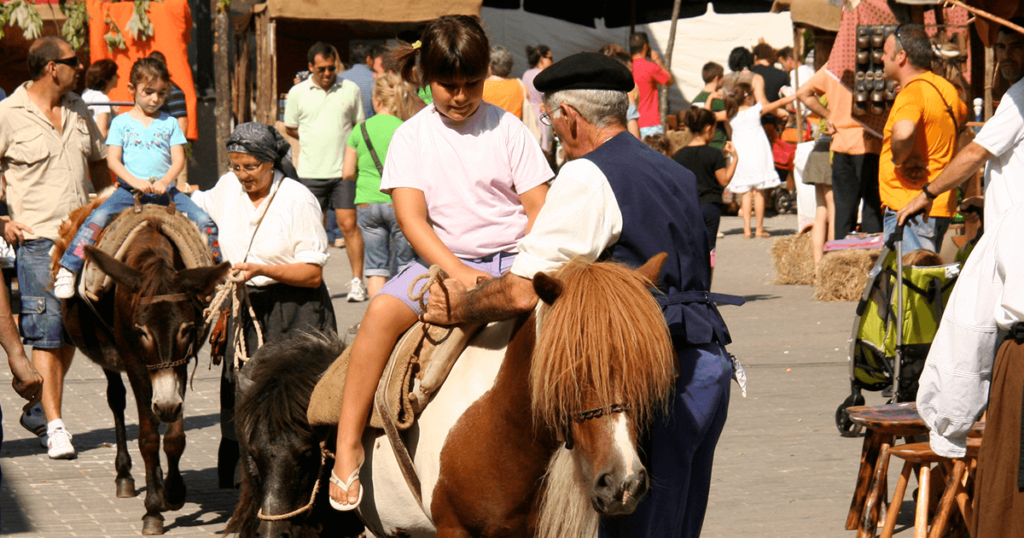
Fiestas del pueblo feature food and drink and generally an orchestra playing late into the night. Often there are also games for kids, sometimes a race. But until the fiestas del segador, the reaper, in Benia de Onís, I’d never seen more people watching a competition than lining up under the tent for a drink, and I’d never seen more adults competing than children.
Benia is a village in the county of Onís, in the Picos de Europa, which are the mountains par excellence in Spain—not the highest, nor the longest chain, nor the coldest, but the ones with the most culture and folklore, and the greatest variety of flora and fauna. They are where the Reconquista—the centuries-long Christian retaking of Spain from the Moors—began. It still seems more savage than tamed, but gently so, with high lush green meadows and rocky peaks where goats gather. Yet these mountains are full of villages, and many villages full of people who remember the traditions of their herding and farming forebears, which they celebrate, in the case of Benia, with much laughter and fun.
Six competitions were held: carrera de sacos, carrera de madreñas, cocurso de cabruñu, concurso de siega, levantamiento de sábanu, and tiro de cuerda. The first and the last, a sack race and a tug of war, were the two I knew; the others were based on the agricultural life of the area: a race in the region’s typical three-pronged wooden clogs, a contest of hammering the scythe in preparation for sharpening, another in cutting grass with the scythe, and the last a race loading hay onto a canvas cloth, cinching and tying the corners, then lifting the huge bundle onto your back and carrying it 100 meters.
That was physically the most taxing, and the damp hay weighed so much—40 kilos, some guessed, others just as confidently putting the weight at 100—that some contestants couldn’t lift it. The lifting was accomplished by standing the bundle on end, kneeling to let it fall across your back, and then, with great leg strength, rising. Once you were up, you had to balance it as you carried it. Of nine competitors, only four were able to carry it the full distance to cross the finish line. That, I was told, was how hay in the old days was brought down from the fields.
What a lot of effort, I thought. Why didn’t they use a wagon? A wagon couldn’t get to the high fields on mountain slopes. Why not a donkey or a mule? Not everyone had a donkey or mule. Everyone had a back.
At the fiesta, a tourist from Almería proved she had one, the only woman to compete, this year or any year. She was about 30, and took her place among the sturdy village men, they in work boots, she in black suede dress boots. She had short dark hair, earrings, and a big smile. After she got help getting to her feet with the bundle on her back, she staggered down the grassy track to the spectators’ shouts of encouragement. A few steps, a pause, another step. Unlike some of the men, who bore the weight on their shoulders or upper back, the woman, bent horizontal, was carrying it across the small of hers; even her head was covered by the great load, and we spectators saw her legs and not much more of her. Yes, she had a back, at least when she started. Would she have one by the end of the circuit? We watched and cheered. The sack shifted to one side, she staggered, the sack wobbled, and then slid off, half-crushing her in the process. She rose, and we cheered. She was laughing, as if she’d had a lot of fun but didn’t mind it being over. Over? Not at all! The night was young, the orchestra would start up, and people who staggered home in the wee hours wouldn’t be nursing their backs the next day but their heads. That hasn’t changed.

